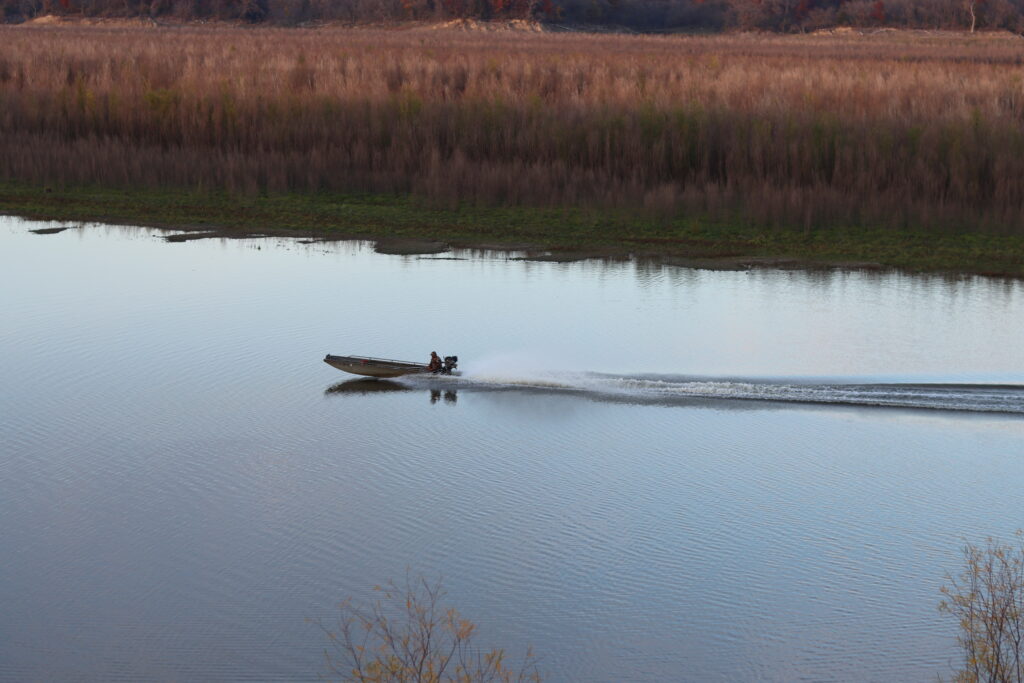
Iowa DNR confirmed the presence of zebra mussels in Saylorville Lake. (Photo by Cami Koons/Iowa Capital Dispatch)
The Iowa Department of Natural Resources confirmed zebra mussels, an invasive species that can interrupt native aquatic life, were present in Saylorville Lake.
Kim Bogenschutz, the aquatic invasive species program coordinator for DNR, said zebra mussels are in many of the high-use lakes in the state, but this is the first exposure to the Des Moines area.
Zebra mussels are now present in 18 Iowa lakes and nine rivers, according to a DNR press release.
Bogenschutz said the mussels most likely entered the lake from a boat that had previously been an “infested” lake or river.
GET THE MORNING HEADLINES.
Prevention is the best treatment for zebra mussels, as not much can be done once a body of water is infested. The responsibility is largely on anglers and boaters to prevent the spread of the small, striped shellfish.
Bogenschutz said draining all water is “a critical step” when leaving any body of water, to prevent the spread of zebra mussels.
“Young zebra mussels are microscopic and can be unintentionally transported with water in live wells, bilges, ballast or bait buckets,” she said in the press release.
DNR confirmed the presence of zebra mussels on boats in the Saylorville Lake Marina area in response to calls from concerned boat owners that noticed the mussels while winterizing their boats.
“We’re really appreciative of the individuals that contacted our observation officer,” Bogenschutz said in a call with Iowa Capital Dispatch. “DNR staff can’t be everywhere so being able to rely on our knowledgeable public to be additional sets of eyes out there is a wonderful asset.”
Bogenschutz said boat owners should pay close attention to draining and checking their boats as they pull them out for the winter season and reach out to the department if they see anything.

Iowans are encouraged to clean, drain and dry any boats or equipment before leaving a body of water to prevent any unintentional transportation of aquatic life. This is also mandated by the Aquatic Invasive Species law that makes it illegal to transport aquatic invasive species.
According to the U.S. Geological Survey, zebra mussels were first observed in Iowa in 1992 and have to date been confirmed in 32 U.S. states.
The mussels, which are native to the Black, Caspian, and Azov Seas, get their name from the alternating, dark and light stripes on their D-shaped shells.
Zebra mussels build up on hard surfaces and form dense clusters that can kill native mussels, clog water intakes, increase algal blooms and interfere with the aquatic food chain.
DNR plans to monitor the lake next summer to determine the “abundance and distribution” of the mussels, according to the press release.
YOU MAKE OUR WORK POSSIBLE.

